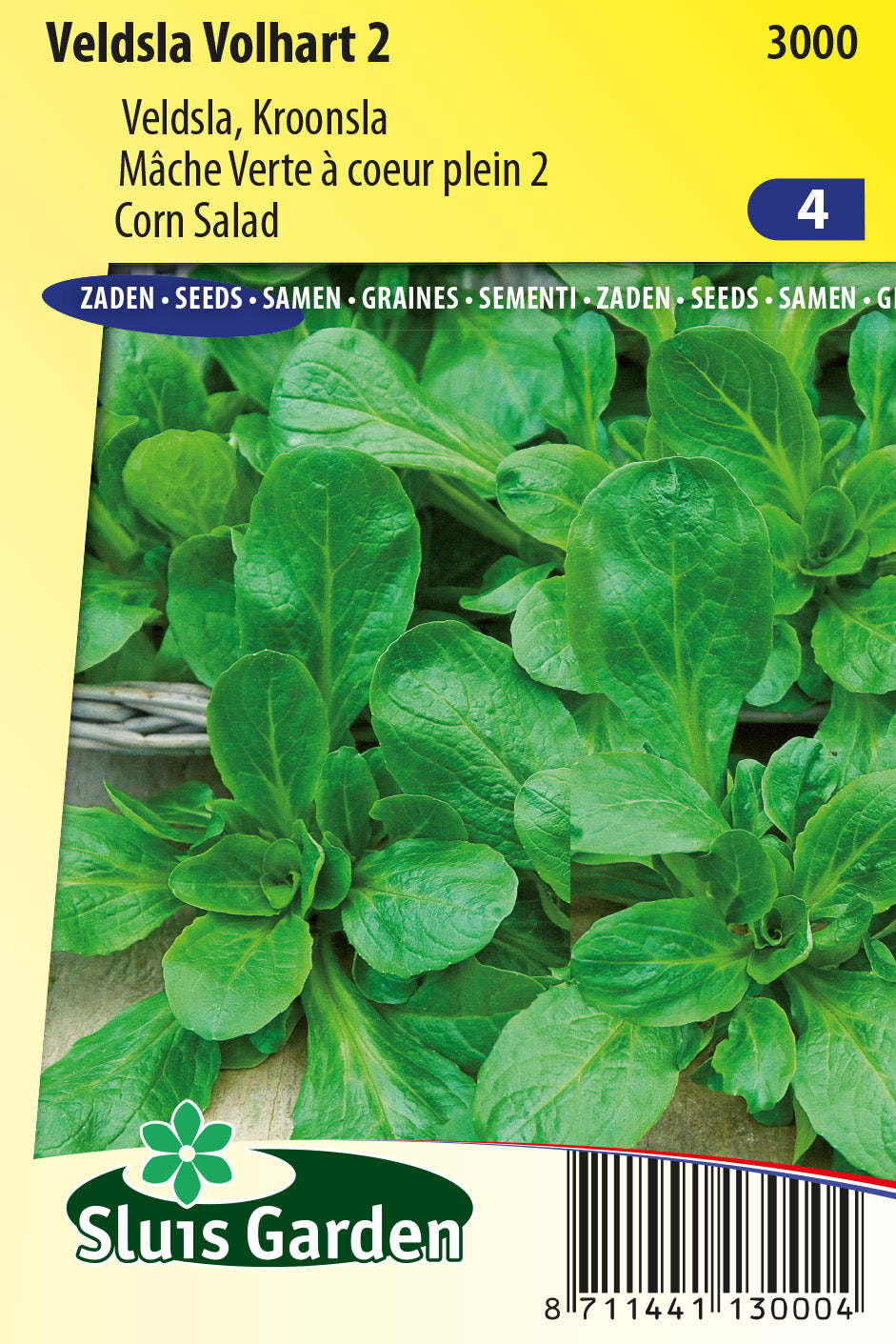1
/
of
1
Cornsalad Volhart 2
Cornsalad Volhart 2
Regular price
1.550 KWD
Regular price
Sale price
1.550 KWD
Unit price
/
per
Shipping calculated at checkout.
Couldn't load pickup availability
Growing Cornsalad (Valerianella locusta) 'Volhart 2' is similar to growing other varieties of Cornsalad. Here's a general guide on how to grow Cornsalad 'Volhart 2':
**1. Planting Time:**
- Cornsalad is a cool-season crop. It can be grown in early spring or late summer/early fall. It thrives in cooler temperatures.
**2. Soil Preparation:**
- Choose well-draining soil with good fertility. Cornsalad prefers a slightly alkaline to neutral pH (around 6.0 to 7.0). Incorporate organic matter such as compost into the soil.
**3. Sunlight:**
- Cornsalad prefers partial shade to full sun. It can tolerate some shade, making it suitable for growing in areas with limited sunlight.
**4. Planting Seeds:**
- Directly sow Cornsalad 'Volhart 2' seeds in the garden. Plant the seeds about 1/4 to 1/2 inch deep and space them 1 to 2 inches apart. Rows can be spaced about 6 to 12 inches apart.
**5. Watering:**
- Keep the soil consistently moist. Water regularly, especially during dry periods. Avoid overwatering to prevent waterlogged conditions.
**6. Fertilization:**
- Cornsalad is not a heavy feeder. A balanced, all-purpose fertilizer can be applied before planting. Excessive nitrogen may result in lush foliage but less flavor.
**7. Thinning:**
- Once the Cornsalad 'Volhart 2' seedlings are a few inches tall, thin them to the recommended spacing. Proper spacing allows for good airflow and prevents overcrowding.
**8. Companion Planting:**
- Cornsalad can be grown alongside other cool-season crops. It's a good companion for lettuce, radishes, and other leafy greens.
**9. Pests and Diseases:**
- Cornsalad is generally resistant to pests and diseases. However, keep an eye out for aphids or slugs. Insecticidal soap and other organic remedies can be used if needed.
**10. Harvesting:**
- Harvest Cornsalad 'Volhart 2' leaves when they are young and tender, usually around 6 to 8 weeks after planting. Use scissors to cut the leaves, leaving the roots intact for regrowth. Harvesting can be done continuously as the plant grows.
**11. Successive Planting:**
- To enjoy a continuous harvest, consider successive plantings every few weeks.
**12. Cold Tolerance:**
- Cornsalad is cold-tolerant and can withstand light frosts. It may even overwinter in milder climates.
**13. Culinary Uses:**
- Cornsalad 'Volhart 2' has a mild, nutty flavor and is often used in salads or as a garnish. It pairs well with a variety of dressings and toppings.
By following these guidelines, you can successfully grow Cornsalad 'Volhart 2' or any other variety. Adjust care based on your local climate and growing conditions.
**1. Planting Time:**
- Cornsalad is a cool-season crop. It can be grown in early spring or late summer/early fall. It thrives in cooler temperatures.
**2. Soil Preparation:**
- Choose well-draining soil with good fertility. Cornsalad prefers a slightly alkaline to neutral pH (around 6.0 to 7.0). Incorporate organic matter such as compost into the soil.
**3. Sunlight:**
- Cornsalad prefers partial shade to full sun. It can tolerate some shade, making it suitable for growing in areas with limited sunlight.
**4. Planting Seeds:**
- Directly sow Cornsalad 'Volhart 2' seeds in the garden. Plant the seeds about 1/4 to 1/2 inch deep and space them 1 to 2 inches apart. Rows can be spaced about 6 to 12 inches apart.
**5. Watering:**
- Keep the soil consistently moist. Water regularly, especially during dry periods. Avoid overwatering to prevent waterlogged conditions.
**6. Fertilization:**
- Cornsalad is not a heavy feeder. A balanced, all-purpose fertilizer can be applied before planting. Excessive nitrogen may result in lush foliage but less flavor.
**7. Thinning:**
- Once the Cornsalad 'Volhart 2' seedlings are a few inches tall, thin them to the recommended spacing. Proper spacing allows for good airflow and prevents overcrowding.
**8. Companion Planting:**
- Cornsalad can be grown alongside other cool-season crops. It's a good companion for lettuce, radishes, and other leafy greens.
**9. Pests and Diseases:**
- Cornsalad is generally resistant to pests and diseases. However, keep an eye out for aphids or slugs. Insecticidal soap and other organic remedies can be used if needed.
**10. Harvesting:**
- Harvest Cornsalad 'Volhart 2' leaves when they are young and tender, usually around 6 to 8 weeks after planting. Use scissors to cut the leaves, leaving the roots intact for regrowth. Harvesting can be done continuously as the plant grows.
**11. Successive Planting:**
- To enjoy a continuous harvest, consider successive plantings every few weeks.
**12. Cold Tolerance:**
- Cornsalad is cold-tolerant and can withstand light frosts. It may even overwinter in milder climates.
**13. Culinary Uses:**
- Cornsalad 'Volhart 2' has a mild, nutty flavor and is often used in salads or as a garnish. It pairs well with a variety of dressings and toppings.
By following these guidelines, you can successfully grow Cornsalad 'Volhart 2' or any other variety. Adjust care based on your local climate and growing conditions.
Share

